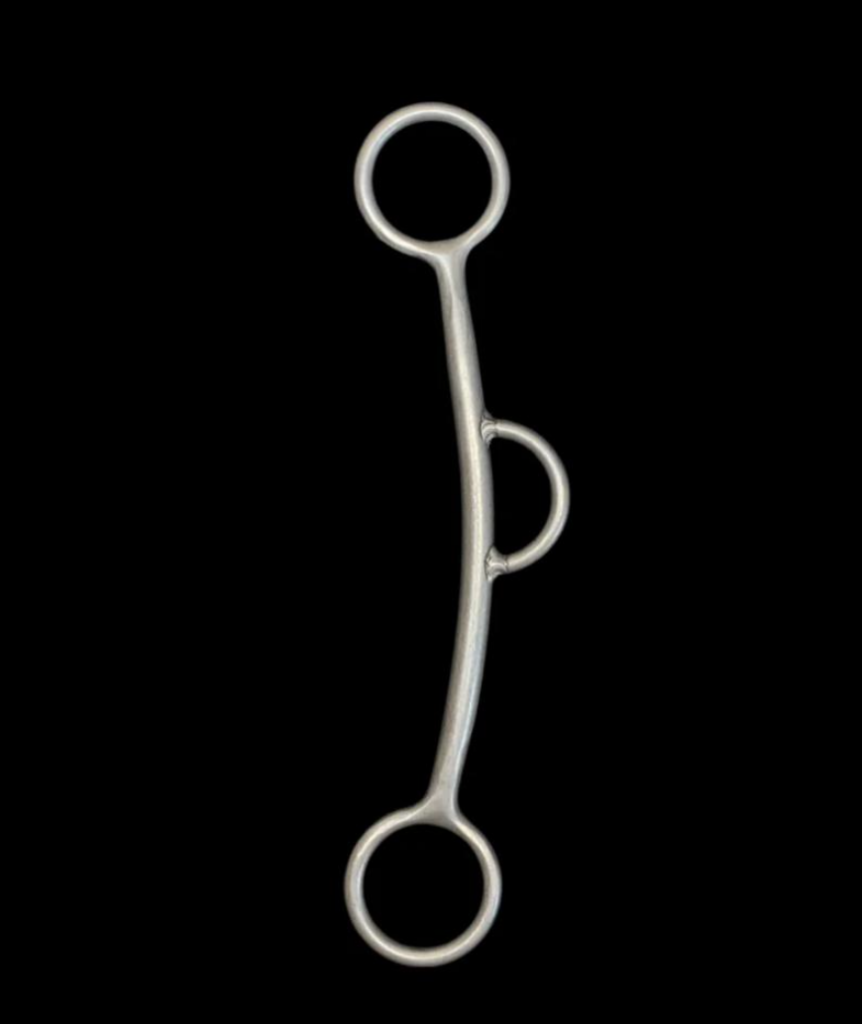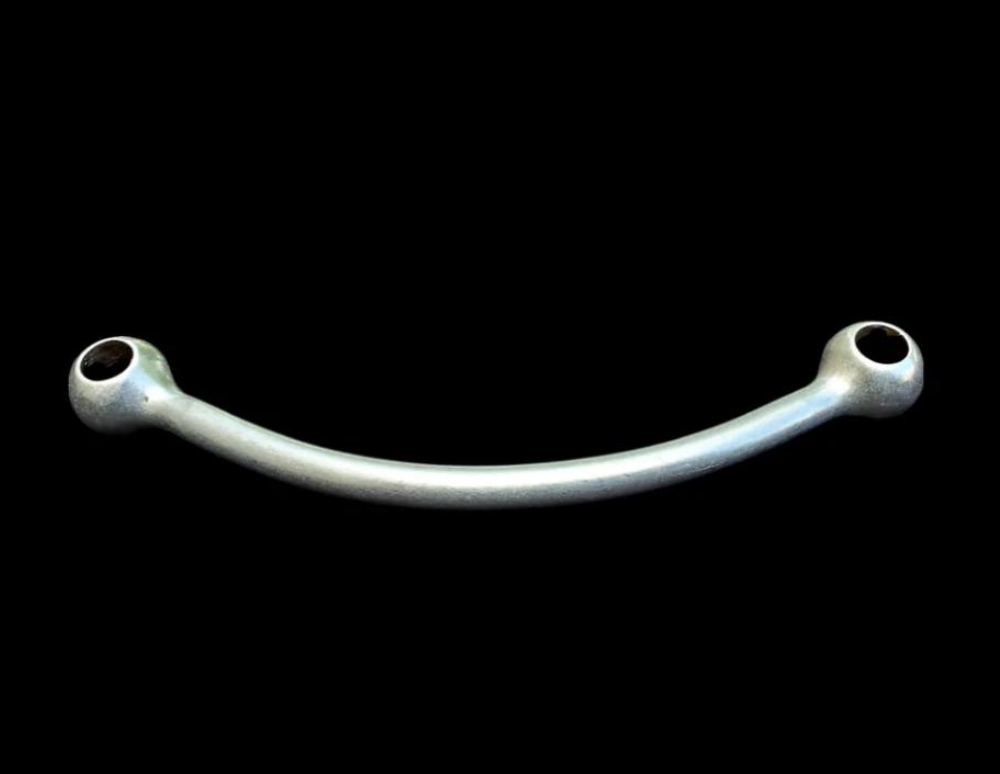Finding the right bit is a beautiful thing, but when it comes to barrel racing bits, the waters can be murky and the quest to finding the perfect headgear can be overwhelming.
Behold, the bit breakdown series. BarrelRacing.com caught up with professionals from every corner of the barrel industry to decode the bit in parts, making it easier for riders to look at any bit and see how it’s going to work in a horse’s mouth.
Keeping an open mind when it comes to bits is essential says colt starter and roper Justin Briggs.
“Horses react a little different in their mouth and their chin to everything,” Briggs said. “You’ve got to have a little bit of everything in your tack room.”

Shanks and Sweep
The shanks of a bit is the portion below the mouthpiece. The weight, length, and curvature—often called “sweep”—all play into how a shank will react to a riders’ hand.
“A bigger sweep on a shank means it’s going to react slower when pulled on,” Briggs said.

A straighter shank will give the opposite effect, connecting with a horse’s mouth sooner.
The same is true when it comes to length of the shank too, since the shank is a lever. A short shank will take less pulling to get a reaction while a longer shank will take more pulling.

“Everybody needs to keep in mind what kind of rider they are when they’re in a high-pressure situation and seek out the bits that will help in those situations,” five-time NFR qualifier Ivy Saebens said.

Purchase
The purchase of the bit is the distance from where the headstall attaches to the mouthpiece.
“A bit with more purchase is going to help them break at the poll, roll their shoulders back and get on their hind end,” Futurity guru Sharin Hall said.

The bigger the purchase, the higher on the jaw the curb strap will attach. Bit maker Troy Flaharty’s top seller is a “Betty” cheek, with equal length of shank and purchase.
“A bit is a lever, so if you shorten the purchase you have to pull less to get a response [in the mouth],” Flaharty said. “The longer the purchase, the slower it will react.”
Jointed vs Solid Mouthpieces
One of the most noticeable parts of the bit is the mouthpiece. While there are hundreds of mouthpiece combinations, one of the main distinctions between them is whether they are jointed or solid.
“Typically, the more breaks you have in a mouthpiece, the more lateral flexion you’ll have,” Flaharty said.
Jointed mouthpieces can be less intimidating for young horses, too. When it comes to training, a broken mouthpiece can loosen up a stiff horse while a solid mouthpiece can stiffen up a bendy horse.
“After I get a horse flexible with a broken mouthpiece, I like to put them in something solid because I get more face,” Briggs said.


Thickness of Mouthpieces
When a mouthpiece is pulled on in the mouth, it comes into contact with the bars, tongue, and upper pallet. How a mouthpiece is jointed plays a large role in how it interacts with the structures of the mouth, but the weight of a bit is important, too.
“The thinner the mouthpiece, the more feel you’re going to have,” Flaharty said.
In contrast, Briggs likes thicker mouthpieces for older horses, saying they’ll pick the bit and carry it more comfortably compared to something thin.
Mouthpiece: Twisted Wire

One of the most common mouthpieces is twisted wire, and it’s often used in tandem with other mouthpieces.
Twisted wire barrel racing bits feel is determined both by the frequency of twists and the shape of the metal itself. A smooth twisted wire will be less abrasive than a square or hexagonal twisted wire. Similarly, fewer twists give less feel than something that is tightly wound.
Mouthpiece: Dog Bone
A dog bone mouthpiece is broken twice, creating a “dog bone” shape in the middle. Hall likes dog bones for horses that are sensitive in the corners of their mouth and need a little more bend.
“The more breaks in a mouthpiece, the more bend you get,” Hall said. “I’m the girl with a three-piece mouthpiece on everything.”
Mouthpiece: Lifesaver
A lifesaver is a jointed ring not dissimilar to a dog bone with its jointed capabilities. But unlike a dog bone, a lifesaver can apply tongue pressure like a port when pulled on.
“The lifesaver will work on the bars of the mouth, the corners of the mouth and have some tongue pressure,” Flaharty said. “It there is a colt that gets its tongue over the bit, these will make it harder to do that.”
Mouthpiece: Port
Ported bits are more common in the roping pen but have their place in a barrel racer’s tack room too.
“I think ports are really underutilized in the barrel industry,” Flaharty said. “I’ll put a port on a small gag cheek so it’s not a sudden grab. They really help a horse that scrambles around a turn keep from getting strung out.”
A port, jointed or not, brings both security and face control to horses in all stages of training.
“I really like ports in the early stages on my colts,” five-time NFR qualifier Cheyenne Wimberly said. “It gives some tongue pressure and release.”
Mouthpiece: Bar/Mullen

Possibly the simplest mouthpiece of all bits, not just barrel racing bits is the Mullen, which is a solid bar with a slight bend in it. As mentioned in the broken vs solid mouthpiece section, the rigidity of a mouthpiece like a Mullen will straighten up a wiggly horse.
“I like that I can pull on a bar bit and it doesn’t give them a direction as much as it gets them off my hands,” Wimberly said. It’s not too severe on them.”
2021 WPRA World Champion Jordon Briggs likes Mullens for younger horses that are gaining speed.
“I’m a really big Mullen fan,” Jordon said. “I think I’ve ridden every horse that I’ve exhibitioned in these. They can push on it a little bit, but it picks their front end up and gets them square in their shoulders.”
Check out Part 2 of the Bit Breakdown Series to discuss combination bits, gags and more.





